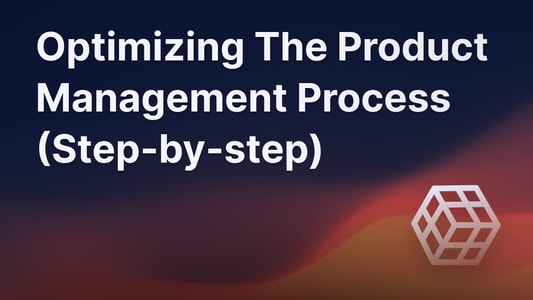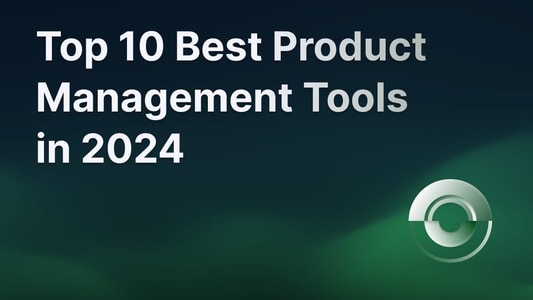Blog Founder StoriesTurning a Struggling Side Project into a $2,500 MRR Success
Turning a Struggling Side Project into a $2,500 MRR Success
Our insights and learnings about the bumpy journey of reaching $2,500 MRR with Featurebase.

Wow, our side project just hit $2,500 MRR! 🎉
Here's our bumpy journey, the strategies that worked, and the lessons we learned along the way 👇
So, how on earth did we end up here?
We launched our MVP in early 2021 but decided to put the project on hold since the initial results were a flop.
Fast forward to the end of the year, and surprise, surprise - Featurebase started gaining some traction!
So we thought, "Hey, let's give it another shot."
In early 2022, we launched a sleeker, more polished version of Featurebase, and by year's end, we had hit $1,200 MRR.
And guess what? It took us just three months to double that this year. 🚀

What worked for us?
1. Offer exceptional customer support
From the beginning of the year, I've completed over 320 live support requests with an average response time of 1 minute. 🫠
Waking up at 4 a.m. to answer your users might not be sustainable, but offering customer support as a product founder is a game changer.
It sets you apart from the competition because, let's be honest, which other founder is fixing bugs and helping customers on a Sunday night?
Initially, your product will suck, but your customers must feel confident that you'll work day and night to get shit done once a problem arises.
2. Validate new features with money
A product is never truly "finished." There are always new features some users might want.
Instead of working tirelessly to ship a feature for a trial user who may never pay, ask them to subscribe to a paid plan first.
Promise to deliver their feature in a few days, but only after they've subscribed.
This approach has saved us time by avoiding niche features for people who would never pay anyway.
3. Capture more of the value you create
Want a sustainable business? Charge more, but do it the smart way. Focus on adding value to your product first.
We achieved this by rolling out features like SSO, User Segmentation, and other unique ones for larger companies.
You can keep entry-level plans affordable, but why should an enterprise company pay just $35/mo for something that delivers 100x value?
If we had bundled all the Enterprise features into our standard plan at the same price, we'd probably be missing over 40% of our MRR.
4. Consistent communication
Don't let your traffic flow into a leaky bucket. Plug those holes and keep your customers engaged.
Craft and optimize drip campaigns to onboard new users and showcase your product.
Stay on the radar of potential customers and keep existing ones updated by consistently sending email newsletters and changelogs. ✉️
This approach keeps everyone in the loop about updates and ensures you remain the first choice that comes to mind for those still weighing their options.
5. Bottom-of-funnel content marketing
If you're in a competitive space, consider targeting and writing content for high buyer intent & low-difficulty keywords. ✍️
What does it mean?
High buyer intent keywords are searched by users actively looking to buy a solution to their problem.
An example of this would be [competitor's name] + alternative
This shows especially high intent as the user has likely already paid for an alternative solution before and is looking for a new one.
Now, you'll be right there to capture their attention.
If you have a great product, this is an amazing growth hack that has worked wonders for us.
Now, let's talk mistakes cause we made a few:
1. Setting wrong priorities
The typical indie makers' game plan goes like this:
- Cook up a basic MVP
- Launch on ProductHunt, Betalist, Twitter, etc.
- If the results are meh after a few weeks, jump to the next idea
We followed the same script, but here's the catch - in a competitive market, rushed MVP just won't cut it most times. ✂️
Our early versions struggled to stand out from the competition and were missing key features.
We failed to understand this early on and wasted a lot of time trying to find a hidden marketing tactic that could magically 10x our MRR rather than confronting the issue that our product sucked.
We found real traction when we took a few months to polish our product and build something people actually wanted to use.
2. Fumbling with customer tracking systems
Here's the problem:
- Most privacy-friendly analytics tools delete user origin data after 24h - when a user visits your website and comes back a day later to sign up, you won't know where they came from
- 40% of folks use an adblocker
We're only now starting to feel the impact of these holes in our data when deciding which marketing channels to double down on.
Our solution:
We now use a combo of Plausible Analytics and Mixpanel to track events.
Plausible allows us to get a high-level overview of where traffic originates, and Mixpanel provides a robust way to monitor events, ensuring we always know where users who sign up come from.
3. Ignoring crucial features
Initially, we postponed features like SSO, User Segmentation, and integrations, which other competitors had.
We thought improving other parts of our product was a better investment, and we brutally ignored them.
As soon as we shipped these features, our more expensive plans became viable, which currently drives most of our revenue.
So, ask yourself: Are you delaying any features your customers KEEP requesting?
The irony is that our own product helped us realize the true importance of these features - SSO and integrations topped the list of customer requests.
Also, a word on development: Instead of writing unit tests, focus on shortening your bug-fixing cycle - this includes spotting the issue ASAP so you can release a fix quickly. We use Sentry paired with Better Uptime and Axiom to make this happen.
What's next?
While hitting $2,500 MRR seemed like a good milestone when we started, it now feels like just the beginning.
Our growth has been accelerating, with nearly 20 new customers joining us last month alone - that's over 17% month-on-month growth rate!
Our plan? Keep doubling down on long-term marketing channels like SEO and focus on creating the best product feedback tool in the market.
The journey has only just begun.
The simple feedback tool with feature voting for your customer feedback. Built-in the 🇪🇺.
© 2024 Featurebase. All rights reserved.



